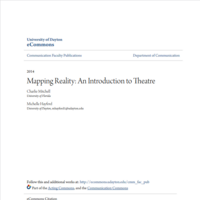Search
Books+
Searching 1,730 books
Search related to the career Photographer
How to Capture Emotions in Photographs
Capturing emotions in photographs is a powerful way to convey a story and connect with viewers on a deep level. Here are some techniques to help you capture emotions effectively:
1. Understand the Subject
Before taking a photograph, take the time to understand the subject's emotions and the story you want to tell. Engage with your subject and create a comfortable environment to encourage genuine emotions.
2. Observe Body Language
Body language can speak volumes about a person's emotions. Pay attention to facial expressions, gestures, and posture. These subtle cues can help you capture the true essence of the moment.
3. Use Composition
Composition plays a crucial role in evoking emotions. Experiment with different angles, perspectives, and framing techniques to enhance the emotional impact of your photographs. Consider using leading lines, rule of thirds, or negative space to create a visually compelling image.
4. Utilize Lighting
Lighting sets the mood and can greatly influence the emotions conveyed in a photograph. Soft, diffused lighting can create a warm and intimate atmosphere, while harsh lighting can evoke tension or drama. Experiment with natural and artificial light sources to enhance the emotional tone.
5. Capture Candid Moments
Candid moments often reveal the most authentic emotions. Instead of posing subjects, try capturing them in their natural state. Candid shots can evoke a sense of spontaneity and raw emotions, making the photograph more relatable and powerful.
6. Focus on Details
Sometimes, capturing emotions lies in the small details. Pay attention to the subtle nuances that express emotions, such as a tear, a smile, or a clenched fist. Zooming in on these details can create an intimate connection between the viewer and the photograph.
7. Timing is Key
Timing plays a crucial role in capturing emotions. Anticipate the decisive moment when emotions are at their peak. Be patient and ready to capture that fleeting expression or gesture that tells a compelling story.
8. Post-processing
Post-processing can enhance the emotional impact of your photographs. Experiment with different editing techniques to adjust colors, contrast, and tones to match the emotions you want to convey. However, be mindful not to overdo it and maintain the authenticity of the moment.
Remember, capturing emotions in photographs requires practice, patience, and empathy. By understanding your subjects, utilizing composition and lighting, and focusing on the details, you can create powerful and emotionally resonant photographs.
Source: Various AI tools
Art
Poetry
Inspiring
Autobiography
Adventure
Magazines
Activity book
Psychology
Vocational skills
Satire
Books tagged satire
Challenging
Searched in English.












































































